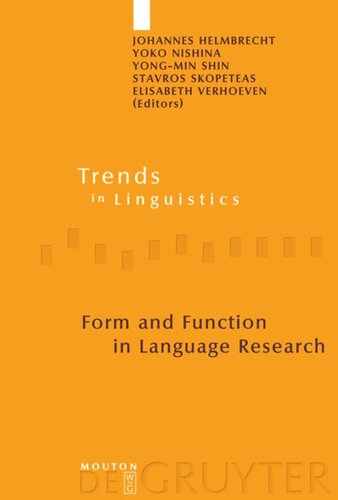

Most ebook files are in PDF format, so you can easily read them using various software such as Foxit Reader or directly on the Google Chrome browser.
Some ebook files are released by publishers in other formats such as .awz, .mobi, .epub, .fb2, etc. You may need to install specific software to read these formats on mobile/PC, such as Calibre.
Please read the tutorial at this link: https://ebookbell.com/faq
We offer FREE conversion to the popular formats you request; however, this may take some time. Therefore, right after payment, please email us, and we will try to provide the service as quickly as possible.
For some exceptional file formats or broken links (if any), please refrain from opening any disputes. Instead, email us first, and we will try to assist within a maximum of 6 hours.
EbookBell Team

4.8
54 reviewsLanguage description enriches linguistic theory and linguistic theory sharpens language description. Based on evidence from the world's languages, functional-typological linguistics has established a number of thorough generalizations about the nature of linguistic categorizations and their manifestation in natural languages. Empirical studies in these fields of linguistics have contributed to sharpen linguistic theory in several respects.
This volume is a collection of 19 contributions from outstanding scholars in the field of functional-typological linguistics that address fundamental issues in the study of language, such as the nature of linguistic categories, the constitution of functional domains, and the form of cross-linguistic continua. Empirical data from individual languages and from typological samples are investigated in order to achieve generalizations about the properties of human grammar(s). Several grammatical phenomena are dealt with including tonal systems, person distinctions, modalities, reciprocity, complex predicates, grammatical relations, word order, clause linkage, and information structure.
The structure of the book illustrates the fundamental importance of the analytical distinction between the onomasiological and the semasiological approach to language and language diversity. Both perspectives are integrated in most papers with a dominant focus on either the former or the latter perspective.